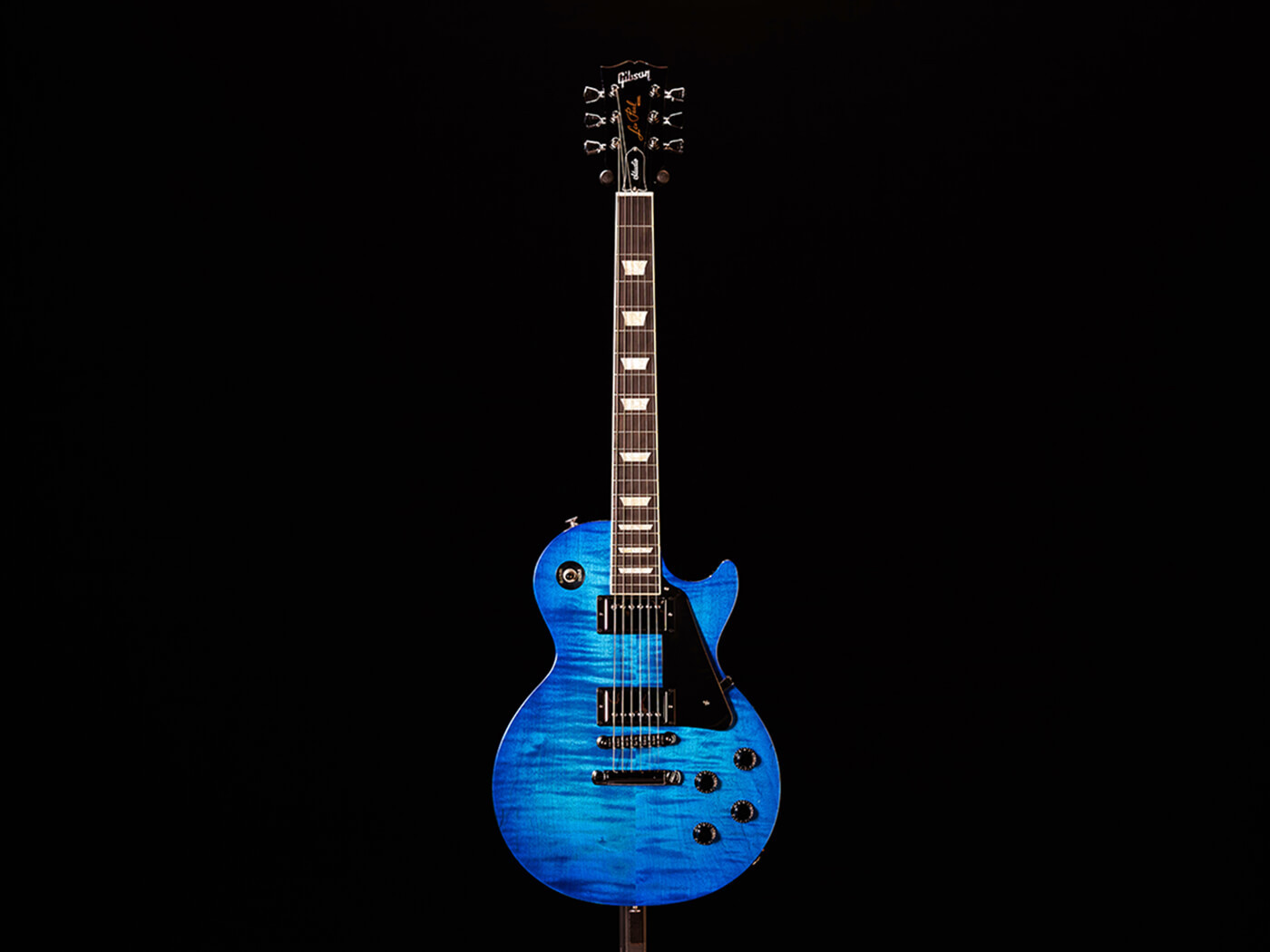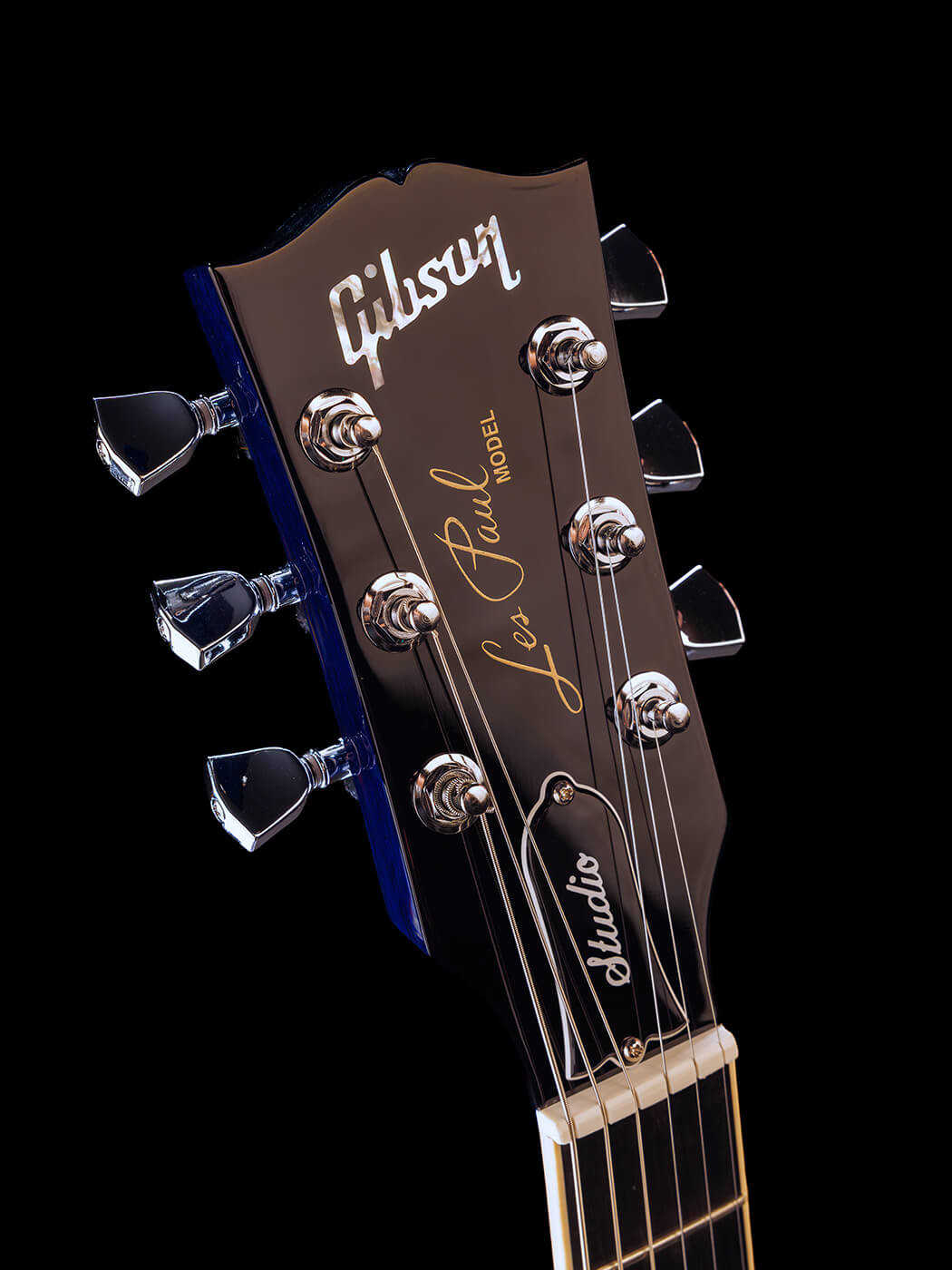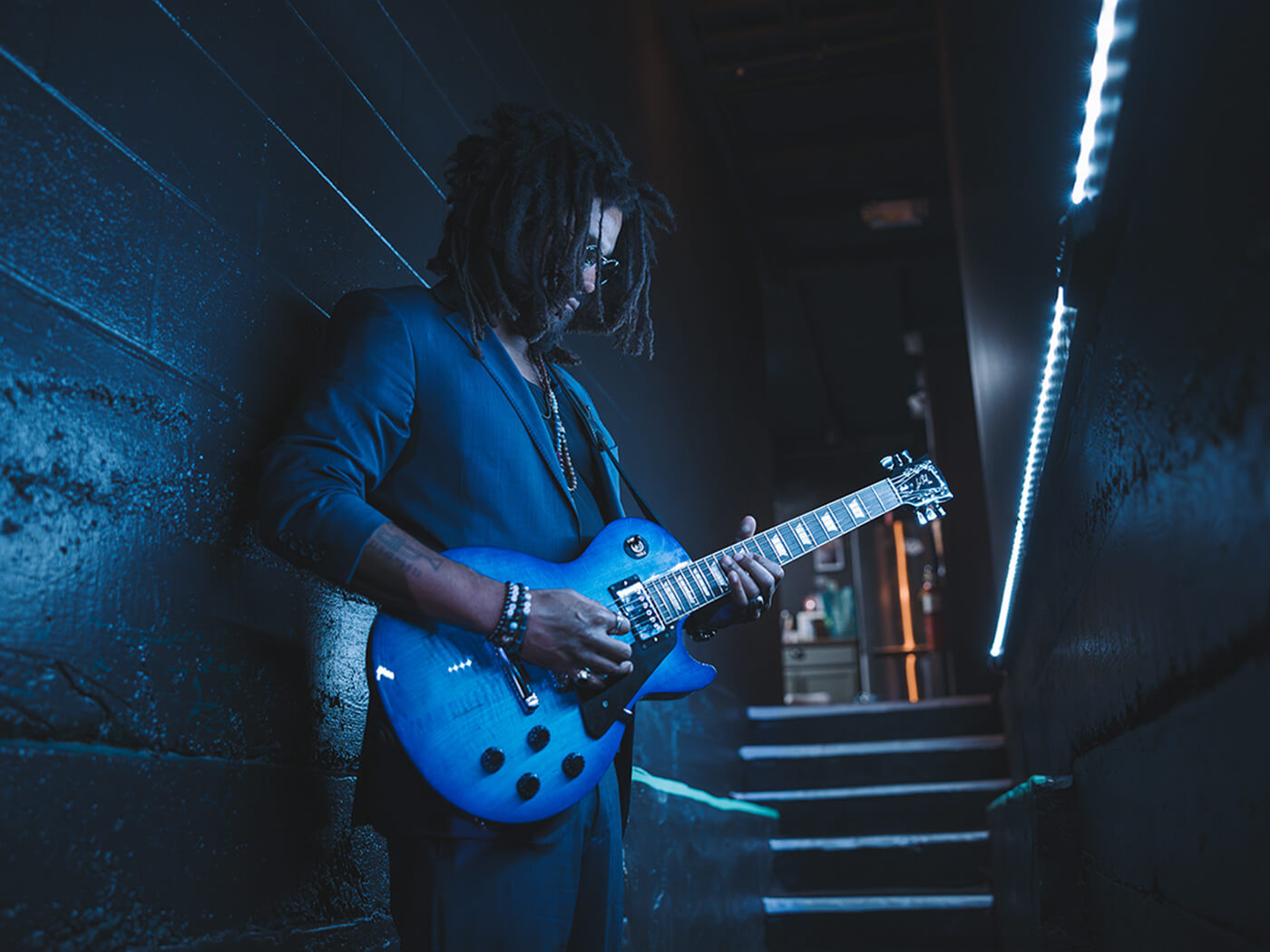The Gibson Les Paul Studio Guitar has long held a special place in the hearts of musicians. Known as the no-nonsense, working musician’s Les Paul, the Studio model stripped away the ornate aesthetics of its Standard and Custom brethren, focusing on delivering pure Les Paul tone and playability at a more accessible price point. This utilitarian approach resonated particularly strongly in genres like punk and emo during the 2000s, with artists like Jade Puget (AFI), Frank Iero (My Chemical Romance), and Ryan Key (Yellowcard) all embracing the Les Paul Studio for its raw power and reliability. Its affordability made it a gateway Gibson for many and a dependable stage companion for touring musicians.
In 2024, Gibson reintroduced the Les Paul Studio, not as a mere reissue, but as a reimagined instrument for the modern guitarist. While retaining the core Studio DNA – the unbound body, plain maple top, and practical finish options – Gibson incorporated contemporary enhancements such as weight relief, a bound fretboard, and powerful Burstbucker pickups. However, as is often the case, these upgrades came with a price increase, positioning the new Studio at a higher price point than its predecessors.
Enter the Les Paul Studio Session, a guitar that takes the Studio concept even further. Responding to player feedback and acknowledging the Studio’s popularity as a professional, no-frills instrument, Gibson has created the Studio Session. This model boasts features and upgrades previously reserved for higher-end Les Paul Standards, appealing to players who desire enhanced features without reaching the top-tier prices. Yet, this enhanced experience also comes with a further price increment, placing the Studio Session above the standard Studio. Let’s delve into what justifies this step up and explore the features that make the Gibson Les Paul Studio Session a compelling option in the modern guitar landscape.
 The Les Paul Studio Session in Cobalt Burst, photo by press
The Les Paul Studio Session in Cobalt Burst, photo by press
Unpacking the Les Paul Studio Session: What’s New?
The Les Paul Studio Session is essentially Gibson’s answer to the question: “What if we took the Les Paul Studio and elevated it based on what players actually want?”. The upgrades are immediately apparent and far from superficial. The most striking difference is the inclusion of an “AA” figured maple top. This replaces the plain maple top found on the standard Studio, immediately lending the Session a more premium and classic Les Paul aesthetic. This figured top is available in four attractive finishes: Translucent Ebony Burst, Honey Burst, Bourbon Burst, and the vibrant Cobalt Burst featured here. For players who appreciate the iconic look of a Les Paul with a figured top, the Studio Session offers a significant visual upgrade.
While visually enhanced, the Studio Session remains true to the stripped-down ethos of the Studio line. It retains the unbound body, contributing to a streamlined and modern appearance. However, unlike some earlier Studios, the Session features a bound ebony fretboard, a step up from the rosewood typically found on standard Studios and a touch of class often associated with higher-end models. The neck profile remains the comfortable and popular SlimTaper, ensuring familiar playability for Les Paul enthusiasts.
Beyond aesthetics and feel, the Studio Session receives notable hardware and electronic upgrades. Gibson has equipped this model with Grover Rotomatic tuners featuring Keystone buttons, known for their reliability and smooth operation. The pickup configuration is also enhanced, featuring a ’57 Classic in the neck position and a ’57 Classic+ in the bridge. These pickups are revered for their vintage-voiced humbucker tones, offering a rich palette from warm cleans to powerful overdrive. Furthermore, the Studio Session expands tonal versatility with push/pull volume controls for coil tapping and push/pull tone controls for phase switching and a pure bypass option. These controls significantly broaden the sonic possibilities of the Gibson Les Paul Studio guitar, allowing players to access a wider range of tones than a standard Studio.
 Close up of the Studio Session in Cobalt Burst, photo by press
Close up of the Studio Session in Cobalt Burst, photo by press
Build Quality, Playability, and Sound: The Studio Session in Action
Concerns about Gibson’s quality control in past years are largely becoming a thing of the past. The Les Paul Studio Session exemplifies the improved standards seen in recent Gibson instruments. The review model exhibited excellent fit and finish, feeling solid and well-constructed throughout. The Cobalt Burst finish was flawlessly applied and consistent, reinforcing the impression of a premium instrument commensurate with its price tag.
Playing the Studio Session through a small tube amplifier and a selection of effects pedals revealed its sonic strengths. The ’57 Classic neck pickup is particularly impressive, delivering a rich and articulate tone. It’s full and beefy without becoming muddy, and surprisingly bright for a humbucker, making it versatile for various styles, from warm jazz tones to jangly clean sounds. The middle position, often overlooked on Les Pauls, shines on the Studio Session, offering a balanced blend of both pickups, perfect for rhythm playing and nuanced lead work. The out-of-phase option further expands the sonic palette, enabling tones reminiscent of Peter Green or funky 70s rhythms.
However, as with any single-cut guitar, the bridge pickup is where much of the magic happens. The ’57 Classic+ in the bridge position of the Gibson Les Paul Studio Session truly excels when pushed with overdrive or distortion. It delivers the classic Les Paul roar, ideal for riffs, leads, and powerful rhythm playing. Engaging the pure bypass option further unleashes the guitar’s raw power, bypassing the volume and tone circuits for a direct and unadulterated signal path. This feature allows the Studio Session to achieve a wide dynamic range, from crushing heavy tones to more nuanced and expressive sounds, making it suitable for genres ranging from heavy rock to blues and beyond.
 Headstock of the Studio Session, photo by press
Headstock of the Studio Session, photo by press
Is the Les Paul Studio Session Your Next Guitar?
For players seeking a versatile and upgraded Gibson Les Paul guitar that bridges the gap between the standard Studio and higher-end models, the Studio Session presents a compelling case. While the price point of nearly two thousand dollars might raise eyebrows for a guitar bearing the “Studio” name, it’s crucial to consider the enhancements offered. While it forgoes body binding and a hard case at this price, the upgraded figured top, ebony fretboard, enhanced pickups, and expanded controls justify the additional cost for many players.
If you can appreciate the streamlined aesthetics and prioritize tonal versatility and upgraded features over traditional Les Paul appointments, the Les Paul Studio Session offers exceptional value. It delivers a wide range of classic Les Paul tones and modern flexibility, making it a true workhorse instrument suitable for studio sessions and live performances alike. For players who want a Les Paul that can truly “do it all,” the Studio Session might just be the most appealing and versatile option in the current Gibson lineup.
 A guitarist playing the Studio Session in Cobalt Burst, photo by press
A guitarist playing the Studio Session in Cobalt Burst, photo by press
Les Paul Studio Session Alternatives
While the Gibson Les Paul Studio Session is a strong contender in its price range, there are alternative single-cut guitars worth considering. Within the Gibson family, the Epiphone “Greeny” 1959 Les Paul offers a compelling option at a lower price point, boasting vintage-inspired features and even the correct headstock shape. For those seeking a US-made guitar in a similar price bracket, the PRS S2 McCarty 594 provides renowned PRS quality and versatility. Alternatively, for a slightly different flavor, the Harmony Standard Jupiter Thinline offers a lighter, semi-hollow option with its own unique tonal character. However, for players specifically seeking an upgraded Gibson Les Paul Studio guitar experience, the Session model stands out with its blend of classic aesthetics, modern features, and versatile tones.
